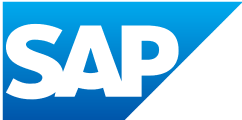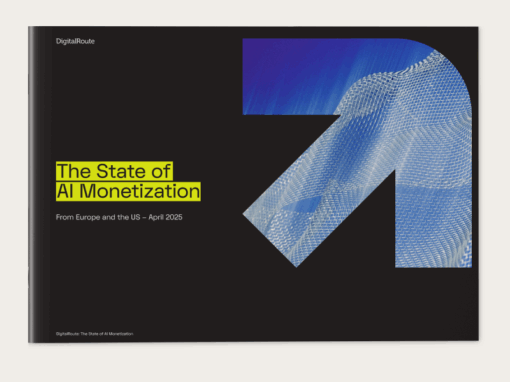The OSS environment is in the middle of a paradigm shift. As networks become increasingly virtualized, disaggregated, and driven by service experience, OSS must evolve from static monitoring and inventory systems to dynamic, real-time, data-powered platforms. For architecture teams tasked with leading this evolution, one critical question is emerging: how do we make subscriber-level data available, meaningful, and usable across the OSS stack?
This isn’t about KPIs or counters. We’re talking about call- and session-level trace data generated by the network itself — based on 3GPP trace functionality — providing real-time visibility into user-specific control and user plane behavior across 3G, 4G, and 5G networks.
Subscriber awareness has always existed — but what’s changing now is not the availability of this data, but the number of systems that depend on it — and the pressure on OSS teams to deliver it reliably, contextually, and in real time. Historically, subscriber and UE (user equipment) trace data, as defined in 3GPP, remained trapped in domain-specific tools with limited extensibility, weak integration capabilities, and high operational overhead. Today, with the rise of automation, service orchestration, and AI/ML, this data is no longer just diagnostic. It’s foundational.
This blog breaks down why subscriber and UE trace data is central to OSS evolution, what’s driving its growing importance, and how new approaches like the DigitalRoute Network Subscriber Trace Analysis solution make it operationally viable.
The New Reality: Subscriber Data Demand Is Surging
Why this matters:
In traditional OSS architectures, subscriber-level trace data was primarily used reactively — post-incident triage, customer care escalations, or KPI reporting. The tools that accessed this data were often probe-based, domain-specific, and disconnected from broader OSS and analytics environments.
Today, that landscape has changed. New, distributed systems — both within OSS and beyond — increasingly demand subscriber and UE centric data in real time, and for much more than troubleshooting.
What’s driving this trend:
- Service Assurance platforms need real-time subscriber traces to correlate network behaviors with end-user experience.
- AI/ML and anomaly detection engines require large volumes of contextualized data to train models that support predictive maintenance, self-healing, and dynamic service quality optimization.
- Policy and orchestration systems use live session-level data to adjust resources based on application usage, congestion, or SLA violations.
- Data lakes and observability stacks rely on granular, enriched data for historical analytics, trend forecasting, and reporting for both technical and business audiences.
How this affects OSS strategy:
Architects must now consider subscriber and UE trace data not as a specialized niche requirement, but as a shared utility — a data service that feeds multiple consumers. This introduces challenges around data architecture, integration, enrichment, and lifecycle management that legacy systems weren’t designed to solve.
What is Subscriber and UE Trace Data?
This set of trace data is not a proprietary invention but leverages existing 3GPP standards, specifically the Trace concept functionality defined in 3GPP Technical Specifications (TS) 32.421. This standard provides detailed, subscriber-level information, more specifically
- Control plane information
- User plane characteristics
- Data from multiple interfaces in both RAN and Core Network
- Coverage across all domains: 3G/4G/5G RAN, CS, IMS, EPC, and 5GC
Key Advantages Over Traditional Methods
- No Additional Hardware: Reports are generated directly by network elements, eliminating the need for separate probe hardware.
- Real-Time, User-Specific Logging: Ability to log data on any interface at the call level for specific users (IMSI) or mobile types (IMEI) in real-time.
- Correlated Insights: Correlate RAN/Core protocol messages with RF measurements for a comprehensive view of network performance and user-perceived quality-of-service (QoS).
- Granular, Timely Data: Unlike traditional Performance Management solutions that provide aggregated 15-minute network-centric views, or physical probe solutions that often lack real-time capabilities, this approach offers detailed, immediate call-level trace data.
Why Subscriber Data Is So Valuable
Why subscriber- and UE level granularity is critical:
Networks may be built from interfaces and nodes, but services are delivered to individual users. Subscriber and UE trace provides granular visibility into how these services behave at the device and session level.
This context is essential to:
- Detecting and resolving issues that don’t trigger alarms but degrade user experience
- Automating service assurance responses (e.g., rerouting, throttling, prioritization)
- Enabling cross-domain correlation, such as understanding how a core signaling event affects RAN congestion or user throughput
- Meeting SLA requirements in enterprise and wholesale scenarios by providing visibility at the session or flow level
What makes it unique:
Subscriber and UE trace data is not raw packet payload or aggregated KPI data — it provides enriched, session-level visibility into signaling flows, user-plane characteristics, QoS context, and, critically, into the RAN domain — which is often a blind spot for traditional probe-based solutions.
This level of visibility also bridges the gap between network operations and customer-facing teams — making trace data a strategic asset for aligning service delivery with experience expectations.
How it supports broader OSS evolution:
Modern OSS architectures are shifting toward intent-based operations, closed-loop automation, and AI-driven assurance. These models require structured, normalized, and enriched input data streams — which subscriber and UE trace data can provide when made available correctly.
The Problem: Traditional Monitoring Tools Weren’t Built for This
Why legacy tools are insufficient:
Most traditional monitoring tools — especially probe-based systems — were designed with a narrow scope: passive monitoring for fault detection and performance management. While some can deliver data in real time, they lack the ability to provide full subscriber and UE trace visibility, especially in the RAN, where interfaces cannot be physically tapped.
What the limitations look like in practice:
- Data silos: Each system consumes and stores data differently, preventing reuse across domains (e.g., data collected in the core can’t be easily used by RAN or customer care teams).
- Probe dependencies: Data collection is often hardware-tied and interface-specific, making scaling difficult and expensive.
- Rigid architectures: Data pipelines are static, and routing new data streams to emerging consumers requires manual integration and testing.
- Operational complexity: Maintaining multiple overlapping monitoring systems creates duplication and hinders centralized observability.
How this slows down innovation:
When data can’t flow freely to where it’s needed, efforts like service assurance automation, SLA reporting, and real-time experience tracking are delayed or derailed. Architecture teams spend more time on integration and troubleshooting than on enabling new capabilities.
What about next-gen monitoring tools?
It’s true that some newer, software-based probe solutions offer more flexibility than their hardware-bound predecessors. These tools often support virtualization and cloud-native environments. But while they improve how data is collected, they still lack RAN visibility and typically operate as domain-bound monitors — limiting their ability to feed subscriber-level insights into multiple OSS, BSS, and analytics systems in real time. The real challenge isn’t just visibility or delivery — it’s building a data layer that transforms fragmented, domain-specific data into enriched, actionable subscriber insights across the OSS.
Enabling Subscriber Observability at Scale
DigitalRoute’s Network & Subscriber Trace Analysis (NSTA) is a modular observability solution designed specifically for modern OSS needs. Built on our proven telecom data mediation solution, NSTA makes it possible to collect, enrich, and route subscriber and UE trace data in real time—across 3G to 5G, RAN and Core, and into any number of OSS, BSS, or analytics systems.
By decoupling data access from legacy heavyweight infrastructure, NSTA helps telecom operators reduce cost, simplify OSS architectures, and deliver the data agility needed for automation, AI/ML, and real-time service assurance — all while integrating seamlessly with your existing environment. Learn how NSTA works and what it enables in real-world OSS deployments → Explore the NSTA solution.
Conclusion: A Strategic Shift, Not Just a Tooling Update
Why architecture teams should care now:
Subscriber and UE trace data is no longer just a troubleshooting asset — it’s becoming a foundational enabler for OSS agility, automation, and intelligence. As demand for this data grows across multiple layers of the OSS stack, so too does the need for a solution that makes it accessible, meaningful, and operational at scale.
What the opportunity is:
By implementing a capability like NSTA, OSS architects can create a data foundation that supports service-centric operations without disrupting existing monitoring systems. It’s not about replacing probes — it’s about elevating subscriber and UE trace data to a first-class citizen in your OSS design.








